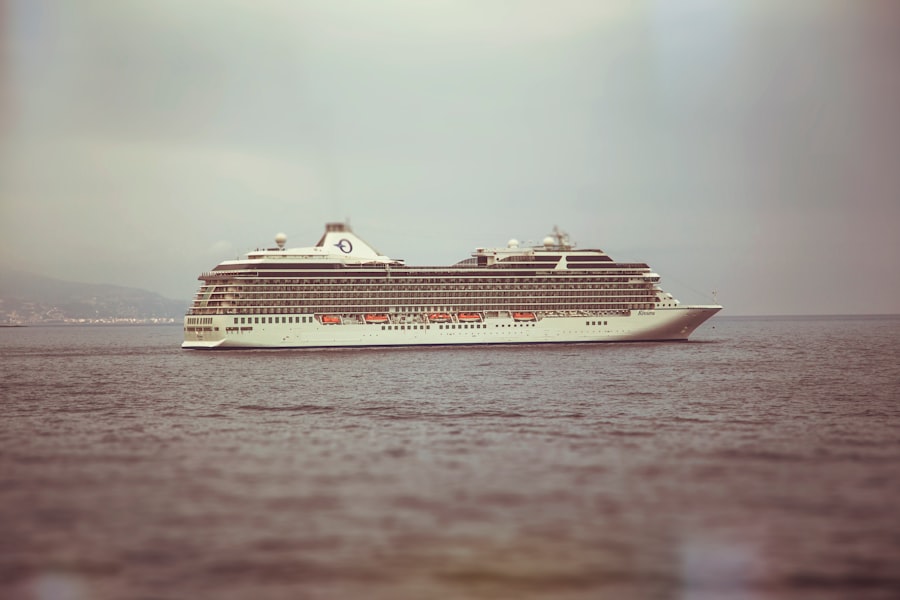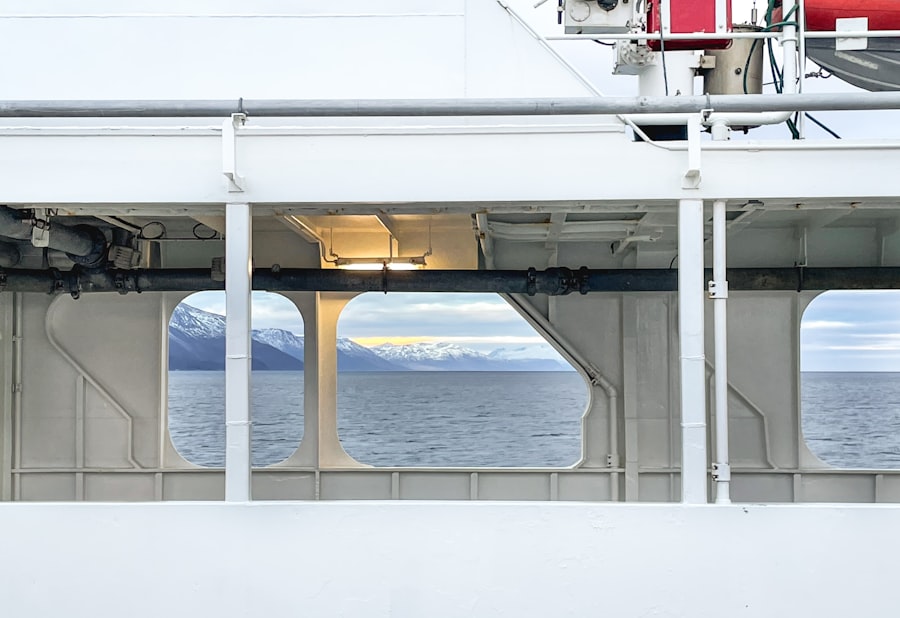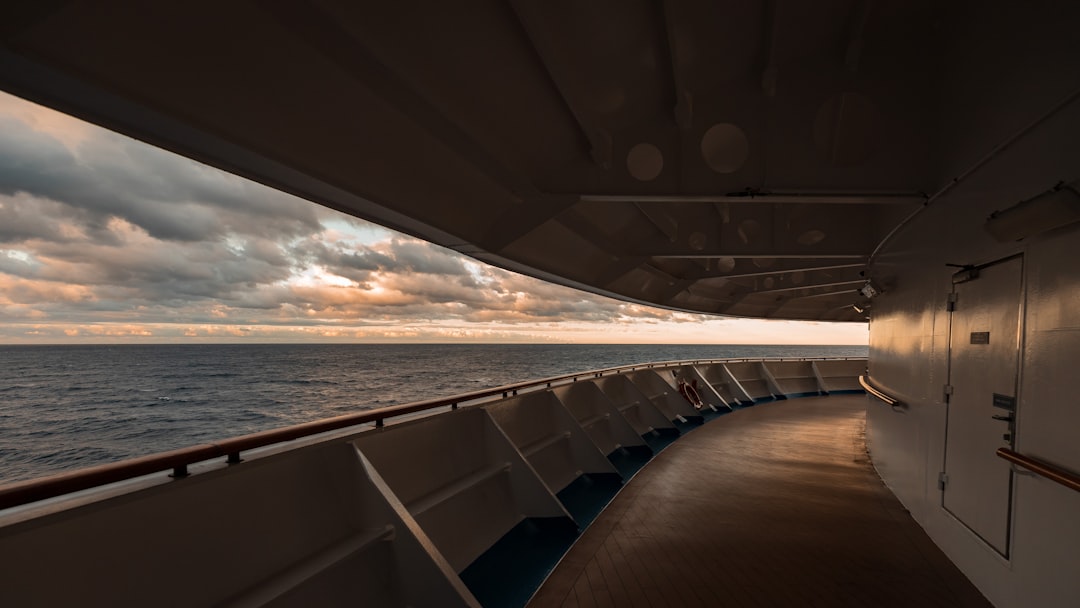The Drake Passage, a body of water that separates South America from Antarctica, is renowned for its tumultuous seas and breathtaking vistas. Stretching approximately 800 kilometers (500 miles) from Cape Horn to the Antarctic Peninsula, this passage is not only a crucial maritime route but also a gateway to one of the most remote and pristine regions on Earth. The waters of the Drake Passage are often characterized by their unpredictable nature, with strong currents and fierce winds that can create challenging conditions for even the most seasoned sailors.
However, for those adventurous enough to traverse these waters, the rewards are immense, offering a unique glimpse into the wild beauty of the Southern Ocean. The significance of the Drake Passage extends beyond its geographical location. It serves as a vital ecological corridor, facilitating the movement of marine species between the Atlantic and Pacific Oceans.
This passage is also steeped in history, having been traversed by explorers and scientists who sought to understand the mysteries of the Antarctic region. As such, it has become a focal point for oceanographic research and a popular destination for cruise enthusiasts eager to experience its dramatic landscapes and rich biodiversity.
Key Takeaways
- The Drake Passage is a body of water between South America’s Cape Horn and the South Shetland Islands of Antarctica, known for its challenging sea conditions and rich marine life.
- The Drake Passage has a significant historical importance as the route taken by famous explorers like Sir Francis Drake, and it is a crucial gateway for ocean currents and marine biodiversity.
- Travelers can expect rough seas and strong winds during a cruise through the Drake Passage, but also the opportunity to witness breathtaking scenery and diverse wildlife.
- The passage is home to a variety of wildlife, including whales, seals, and numerous seabird species, offering unique opportunities for wildlife encounters.
- Weather in the Drake Passage can be unpredictable, with rapidly changing conditions, so travelers should be prepared for cold temperatures and rough seas, and be aware of safety measures.
History and significance of the Drake Passage
The history of the Drake Passage is intertwined with the age of exploration, as it was named after Sir Francis Drake, an English sea captain who navigated these waters in the late 16th century. His voyages marked a significant moment in maritime history, as they opened up new routes for trade and exploration. The passage has since been a critical route for whalers, sealers, and researchers, all drawn by the allure of Antarctica’s untouched wilderness.
Over the centuries, it has witnessed countless adventures and misadventures, with many ships facing the wrath of its notorious storms. In addition to its historical significance, the Drake Passage plays a crucial role in global ocean circulation. The currents that flow through this passage are essential for regulating climate patterns and supporting marine ecosystems.
The mixing of cold Antarctic waters with warmer currents from the north creates a unique environment that sustains a diverse array of marine life. This ecological importance has made the Drake Passage a focal point for scientific research, as understanding its dynamics is vital for addressing broader environmental challenges.
What to expect on an ocean explorer cruise through the Drake Passage

Embarking on an ocean explorer cruise through the Drake Passage is an adventure filled with anticipation and excitement. Passengers can expect to encounter a range of experiences, from the thrill of navigating turbulent waters to the awe-inspiring sight of icebergs and glaciers. The journey typically begins with a departure from Ushuaia, Argentina, where travelers board their vessel and set sail into the open sea.
As they venture further into the passage, they may experience varying sea conditions, which can range from calm to choppy, depending on weather patterns. Onboard amenities are designed to enhance the experience, with knowledgeable guides providing insights into the region’s history and ecology. Passengers can participate in educational lectures, wildlife spotting sessions, and even photography workshops.
The camaraderie among fellow travelers adds to the overall enjoyment, as shared experiences create lasting memories. As they cross into Antarctic waters, passengers are often filled with a sense of wonder and excitement about what lies ahead.
Wildlife and marine life encounters in the Drake Passage
| Encounter Type | Frequency |
|---|---|
| Whales | Regular |
| Penguins | Common |
| Seals | Occasional |
| Dolphins | Occasional |
| Albatross | Frequent |
One of the most captivating aspects of cruising through the Drake Passage is the opportunity to encounter an array of wildlife and marine life. The waters are teeming with various species, including seals, whales, and seabirds that thrive in this rich ecosystem. Passengers may spot majestic humpback whales breaching in the distance or playful orcas swimming alongside their vessel.
The sighting of these magnificent creatures often leaves travelers in awe, reminding them of nature’s grandeur. Birdwatching enthusiasts will also find delight in the diverse avian population that inhabits the region. Albatrosses glide gracefully above the waves, while petrels and skuas can be seen diving for fish.
The chance to observe these birds in their natural habitat adds an enriching layer to the cruise experience. Each encounter serves as a reminder of the delicate balance of life in this remote part of the world and underscores the importance of conservation efforts to protect these species.
Weather and sea conditions in the Drake Passage
The weather in the Drake Passage is notoriously unpredictable, which is both a challenge and an adventure for those crossing its waters.
The passage is known for its strong winds and high waves, particularly during certain times of the year when storms are more frequent.
This variability can create an exhilarating experience for some while posing challenges for others who may be prone to seasickness. Understanding these conditions is crucial for anyone planning a cruise through the Drake Passage. While some days may offer smooth sailing under clear skies, others may present rough seas that require careful navigation.
It is advisable for travelers to stay informed about weather forecasts and to pack appropriate clothing for varying temperatures and conditions. Those who embrace the unpredictability often find that it adds to the thrill of their journey.
Activities and excursions during a cruise through the Drake Passage

A cruise through the Drake Passage offers a plethora of activities and excursions designed to immerse travelers in the stunning landscapes and rich biodiversity of Antarctica. Many cruise itineraries include landings on remote islands or along ice-covered shores where passengers can explore on foot or via small boat excursions known as zodiacs. These landings provide opportunities for hiking, photography, and wildlife observation in some of the most pristine environments on Earth.
In addition to shore excursions, onboard activities often include educational programs led by expert naturalists who share their knowledge about Antarctic ecology and history. Passengers may also have opportunities for kayaking or even polar plunges into icy waters for those seeking an adrenaline rush. Each activity is designed to enhance appreciation for this unique environment while fostering a sense of adventure among travelers.
The experience of crossing the Antarctic Convergence in the Drake Passage
Crossing the Antarctic Convergence is one of the most anticipated moments during a cruise through the Drake Passage. This natural boundary marks a significant change in water temperature and salinity as travelers transition from warmer sub-Antarctic waters into the frigid waters surrounding Antarctica. The experience is often accompanied by a noticeable shift in wildlife sightings, as different species thrive in these contrasting environments.
As passengers cross this convergence zone, they may witness dramatic changes in scenery as icebergs become more prevalent and landscapes transform into stark white expanses. This moment serves as a reminder of how close they are to one of Earth’s last great wildernesses. The excitement builds as travelers prepare to explore Antarctica itself, with its breathtaking glaciers and unique ecosystems waiting just beyond.
Safety measures and precautions for cruising through the Drake Passage
Safety is paramount when cruising through the Drake Passage, given its unpredictable nature and challenging conditions. Cruise operators implement rigorous safety protocols to ensure passenger well-being throughout their journey. Vessels are equipped with advanced navigation systems and safety equipment designed to handle rough seas effectively.
Crew members are trained to respond swiftly to any emergencies that may arise. Travelers are also encouraged to take personal precautions during their voyage. This includes wearing appropriate clothing layers to stay warm and dry while on deck or during excursions.
It is advisable for passengers to familiarize themselves with safety briefings provided by crew members upon boarding, as these briefings outline essential procedures in case of adverse weather or emergencies at sea.
Tips for preparing for a cruise through the Drake Passage
Preparing for a cruise through the Drake Passage requires careful planning to ensure an enjoyable experience amidst its unpredictable conditions.
Packing wisely is crucial; layers of clothing that can be added or removed based on changing temperatures will help keep passengers comfortable throughout their journey.
In addition to clothing considerations, travelers should also consider motion sickness remedies if they are prone to seasickness. Over-the-counter medications or natural remedies can help alleviate discomfort during rough patches at sea. Staying hydrated and maintaining a balanced diet while onboard can also contribute positively to overall well-being during the cruise.
The environmental importance of the Drake Passage
The environmental significance of the Drake Passage cannot be overstated; it serves as a critical habitat for numerous marine species while playing an essential role in global climate regulation. The mixing of cold Antarctic waters with warmer currents from other oceans creates nutrient-rich environments that support diverse ecosystems teeming with life. This area is vital not only for local wildlife but also for maintaining global ocean health.
Moreover, ongoing research in this region contributes valuable insights into climate change impacts on marine ecosystems. Scientists study how shifts in temperature and salinity affect species distribution and behavior within these waters. Understanding these dynamics is crucial for developing effective conservation strategies aimed at protecting both marine life and their habitats in an era marked by rapid environmental change.
The unforgettable adventure of exploring the Drake Passage
Exploring the Drake Passage is an unforgettable adventure that combines natural beauty with rich history and ecological significance. From encountering majestic wildlife to navigating unpredictable seas, each moment spent in this remarkable region leaves an indelible mark on travelers’ hearts and minds. The passage serves not only as a gateway to Antarctica but also as a reminder of nature’s power and fragility.
As travelers reflect on their experiences crossing this iconic waterway, they carry with them stories of adventure, camaraderie, and awe-inspiring landscapes that few have had the privilege to witness firsthand. The memories forged during this journey will undoubtedly inspire future explorations while fostering a deeper appreciation for one of Earth’s last great frontiers—the magnificent Drake Passage.
Embarking on an ocean explorer cruise through the Drake Passage is a thrilling adventure that offers a unique glimpse into one of the most remote and challenging maritime routes in the world. For those interested in learning more about the fascinating aspects of such expeditions, a related article on MyGeoQuest provides insightful details about the journey and the natural wonders encountered along the way. You can read more about these incredible voyages by visiting the article on their website. For further exploration, check out this related article on MyGeoQuest.
WATCH HERE: Drake Passage: Earth’s Deadliest Waters Revealed
FAQs
What is the Drake Passage?
The Drake Passage is the body of water between the southern tip of South America and the northern tip of the Antarctic Peninsula. It is known for its rough seas and challenging sailing conditions.
Who is an ocean explorer?
An ocean explorer is a scientist or researcher who studies the ocean and its ecosystems. They often use specialized equipment and technology to conduct their research.
What is a cruise through the Drake Passage like?
A cruise through the Drake Passage can be a thrilling and adventurous experience. Passengers can expect to encounter rough seas, strong winds, and potentially stormy weather. However, the passage also offers stunning views of icebergs, wildlife, and the unique Antarctic landscape.
What is the purpose of an ocean explorer cruise through the Drake Passage?
The purpose of an ocean explorer cruise through the Drake Passage is to conduct scientific research, study marine life, and explore the unique ecosystems of the region. It also provides an opportunity for passengers to experience the remote and pristine environment of the Antarctic.
What are some of the highlights of an ocean explorer cruise through the Drake Passage?
Highlights of a cruise through the Drake Passage may include sightings of whales, seals, and seabirds, as well as the chance to witness the dramatic landscapes of the Antarctic Peninsula. Passengers may also have the opportunity to participate in educational lectures and workshops led by experienced oceanographers and researchers.
